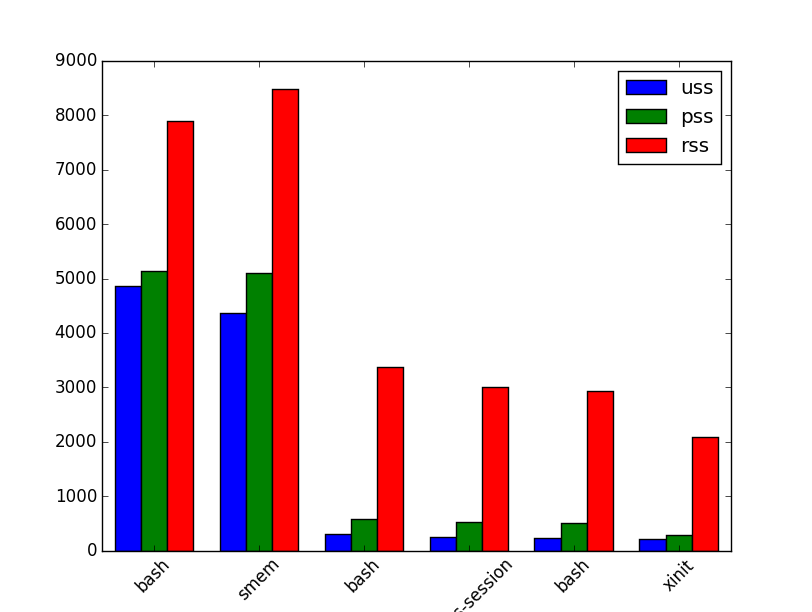OS08b: Virtual Memory with Linux
(Usage hints for this presentation)
Computer Structures and Operating Systems 2023
Dr. Jens Lechtenbörger (License Information)
1. Looking at Memory with Linux
(Specifics of Linux are not part of learning objectives; however,
the following illustrates
shared memory,
and /proc will be revisited in other presentations.)
1.1. Linux Kernel: /proc/<pid>/
/procis a pseudo-filesystem- See https://man7.org/linux/man-pages/man5/proc.5.html
- (Specific to Linux kernel; incomplete or missing elsewhere)
- “Pseudo”: Look and feel of any other filesystem
- Sub-directories and files
- However, files are no “real” files but meta-data
- Interface to internal kernel data structures
- One sub-directory per process ID
- OS identifies process by integer number
- Here and elsewhere,
<pid>is meant as placeholder for such a number
- See https://man7.org/linux/man-pages/man5/proc.5.html
1.1.1. Video about /proc
1.1.2. Drawing about /proc

/proc
Figure © 2018 Julia Evans, all rights reserved; from julia's drawings. Displayed here with personal permission.
1.1.3. Drawing about man pages
Man pages are amazing
Figure © 2016 Julia Evans, all rights reserved; from julia's drawings. Displayed here with personal permission.
1.2. Linux Kernel Memory Interface
- Memory allocation (and much more) visible under
/proc/<pid> - E.g.:
/proc/<pid>/pagemap: One 64-bit value per virtual page- Mapping to RAM or swap area
/proc/<pid>/maps: Mapped memory regions/proc/<pid>/smaps: Memory usage for mapped regions
- Notice: Memory regions include shared libraries that are used by lots of processes
1.3. GNU/Linux Reporting: smem
- User space tool to read
smapsfiles:smem - Terminology
- Virtual set size (VSS): Size of virtual address space
- Resident set size (RSS): Allocated main memory
- Standard notion, yet overestimates memory usage as lots of
memory is shared between processes
- Shared memory is added to the RSS of every sharing process
- Standard notion, yet overestimates memory usage as lots of
memory is shared between processes
- Unique set size (USS): memory allocated exclusively to process
- That much would be returned upon process’ termination
- Proportional set size (PSS): USS plus “fair share” of shared pages
- If page shared by 5 processes, each gets a fifth of a page added to its PSS
1.3.1. Sample smem Output
$ smem -c "pid command uss pss rss vss" -P "bash|xinit|emacs" PID Command USS PSS RSS VSS 765 /usr/bin/xinit /etc/X11/Xse 220 285 2084 15952 1390 /bin/bash -c libreoffice5.3 240 510 2936 13188 826 /bin/bash /usr/bin/qubes-se 256 524 3008 13204 750 -su -c /usr/bin/xinit /etc/ 316 587 3368 21636 1251 bash 4864 5136 7900 26024 2288 /usr/bin/python /usr/bin/sm 5272 6035 9432 24688 1145 emacs 90876 93224 106568 662768
1.3.2. Sample smem Graph
License Information
This document is part of an Open Educational Resource (OER) course on Operating Systems. Source code and source files are available on GitLab under free licenses.
Except where otherwise noted, the work “OS08b: Virtual Memory with Linux”, © 2017-2022 Jens Lechtenbörger, is published under the Creative Commons license CC BY-SA 4.0.
In particular, trademark rights are not licensed under this license. Thus, rights concerning third party logos (e.g., on the title slide) and other (trade-) marks (e.g., “Creative Commons” itself) remain with their respective holders.

